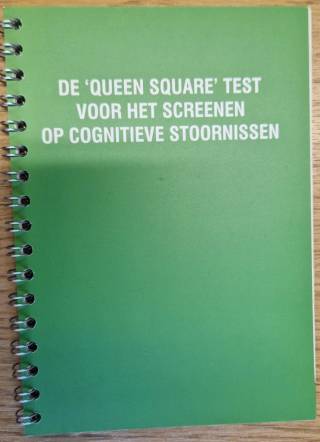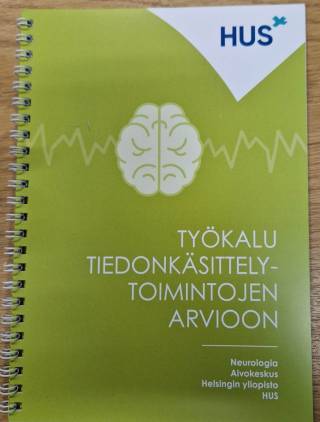The Queen Square Screening Test for Cognitive Deficits, or Green book, as it has become known, was designed by Professor Elizabeth Warrington.
As Professor Warrington described in her interview in 2018, “At some point in the 80s I was asked to revise the protocol that was given to the new junior doctors to help them examine their patients. The version they were given was designed by Oliver Zangwal in the 1950s and asked questions about Dunkirk, etc. I was asked to design a booklet that would replace this and would be something that the young doctors could use to help them to learn about clinical cognitive examination of the patients. This resulted in what is now called the “Green book” and was devised to give junior doctors some material to use when they were doing their routine assessments of the cognitive status of their patients. I had noticed that most of this was done by the young doctors using the contents of their pockets and so I designed the little Green book which could go in a white coat pocket. We tried to tap into most aspects of cognitive function; attention, memory, language, perception and the 3 R’s; all included in the little Green book, and I think that practically every young doctor who comes through Queen Square acquires a copy.”
Since its inception the Green book has had an influence in both the UK and abroad and has reached a global audience of clinicians. Although the original UK version of the book continues to be sold across the world, local versions have been produced with the consent of Professor Warrington. In recent years the Green book has been translated into various languages such as Dutch, Finnish and Thai.

“The Green book (‘groene boekje’) was introduced in The Netherlands during my residence years at the end of the previous millennium; already it was a direct translation of the original from Queen Square. It was translated (the story to read) and adapted (the Famous Faces) by Dutch neurologists with an interest in cognitive neurology and its publication was sponsored by a pharmaceutical company. Its practical approach, pocket-fitting size and the mythical aspects of cognitive bedside test in general made it a desirable item among residents, even more so when the pharmaceutical company decided to no longer sponsor publication. In my department there was a run on the last Green books, and my trainer used it to his advantage by keeping the last box in his well-closed closet only to hand out to excellent pupils who showed above moderate interest in cognitive neurology. These days, the Dutch Neurology Board decided to publish a new edition and with the very appreciated help of Mr Blundred we were able to edit this new edition, adapting again the Famous Faces (now starring Tina Turner, Nelson Mandela, Prime Minister Mark Rutte and Dutch comedian Andre van Duin). I have to admit I made a bit of a show among the neurology residents, the geriatrician, psychologist and psychiatrist participating in our memory clinic to be the first and proud owners of the new edition of the Green book and being able to hand out copies to them. The Green book is now again used in the consulting room and during bedside teaching rounds. To fully understand its test and implications however remains reserved to the residents and neurologists with an interest in the cognitive neurology, explaining the unchanged special status of those who carry the Green book. “
Dr Bertjan Kerklaan

“For years, I had a dream of something suitable for doctors to evaluate cognitive functions as part of a clinical status study. To our delight, we found The Queen Square Green book and got permission to translate this into Finnish for teaching and use by doctors, but not for commercial purposes. We did this work in the University Hospital of Helsinki. After getting permission, we translated the text and adjusted the questions to fit the local culture, and we also added pictures of four famous Finns. The cognitive function assessment tool has been well received by neurologists, trainees and specialists. The next step is to implement this in the doctor's basic training. Thanks to the Queen Square Education team and Professor Warrington, we have received a tool for cognitive assessment of patients that supports systematic assessment, supports training and helps in communication between colleagues. We are deeply grateful for this opportunity. The dream and goal for the future is to edit the linguistic section of Finnish and Swedish together with our speech therapist colleagues.”
Dr Mika Saarela
 Close
Close

